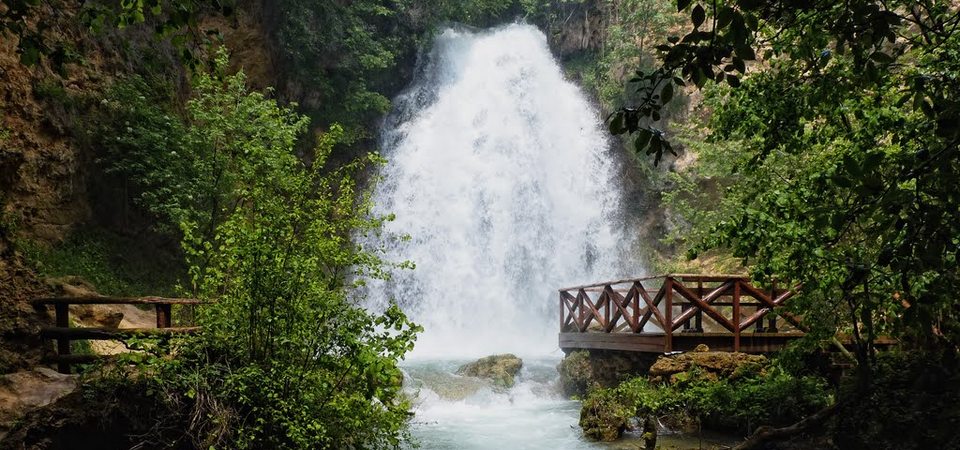Lisine
Lisine, alsno known as Veliki Buk is a watrfall in eastern Serbia, on the Beljanice slopes. The waterfall is located on right tributary river Vrelo of the Resava river, near Resava Cave on 380 meters above sea level. At the bottom of the waterfall is formed small depth lake surrounded by travertine blocks. Together with the source of the river Vrelo, is under state protection as a natural monument "Waterfall Lisine" and as the object of the geological heritage of Serbia.
This waterfall is most accessible of all the waterfalls in Serbia and thanks to locals who recognized the tourism potential is certainly the most visited. This waterfall is most spoken and known in Serbia. Formerly, river was plentiful of water mills and rolling mills for cloth and today locals converted watermill into restaurants, and ponds with trout are ethnic food of this region.
Resava Cave
Resava Cave is the largest cave system in Serbia, and has about three kilometres of passages which makes her one of the greatest natural treasures and most attractive cave in Serbia.It is set into the limestone hill of Babina Glava on the fringes of the Divljakovac karst polje, its entrance at 485 m above sea-level. It is one of the oldest caves in Serbia, some 80 million years old, with some of the older formations dating back around 45 million years. Its formation began before the Great Ice Age through the chemical and mechanical action of a subterranean river running through the limestone bedrock. The Resava cave was discovered in 1962, although it was known of earlier by shepherds who would shelter with their sheep in the cave in bad weather. The interior of the cave abounds in numerous and varied halls, channels, galleries, columns, stalactites, stalagmites, draperies and flowstone waterfalls. The cave formations begin at the very entrance to the cave. The formations came about through the dissolving and precipitation of calcium carbonate, and the colour determined by the minerals through which the water passed. Three colours can be seen, red (from iron oxide), white (from crystalline calcite) and yellow (from the addition of clay). Veliko Vrelo spring flows across a steep cliff to create a spectacular 200 m waterfall.
Ivkov Ponor - Ivkov abyss
This area is characterized by a variety of forms, because it is a highland area mainly limestone composition. Therefore, there are plenty of caves and other karst features (caves, underground rivers). The most famous caves on the territory of this field is Ivkov abyss on Beljanica. It is one of sinking pit because it disappears underground streams of water Recka. At 156 m in length, Ivkov ponor is Serbia’s largest recess.





